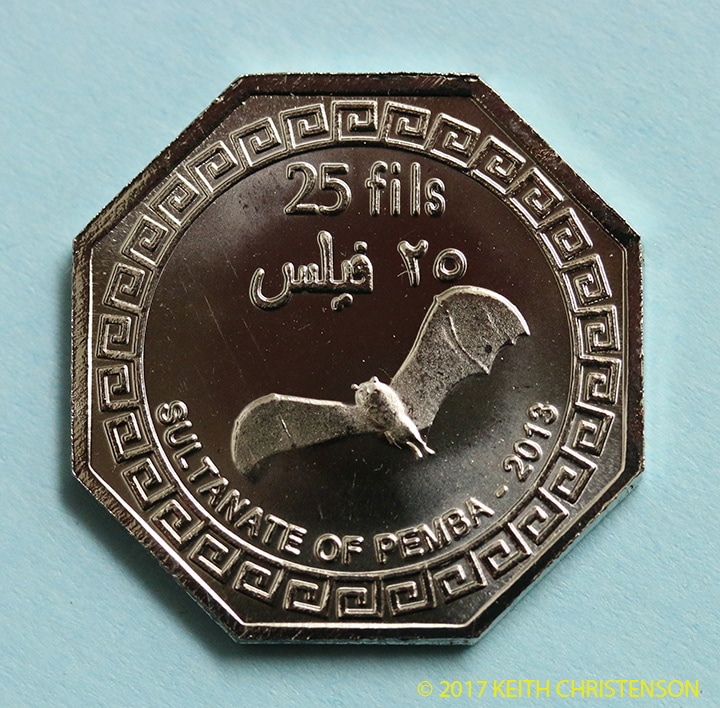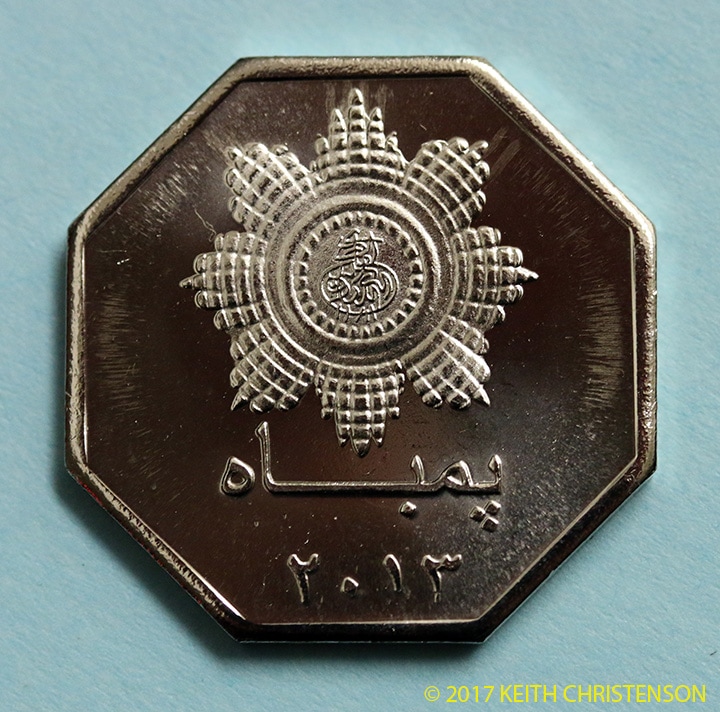But this coin is from Pemba, the island north of Zanzibar, and it does have a bat on it. This is part of a wildlife series for that year with a different animal on each denomination, although for some reason they put a sailboat (the famous dhow) on the 500 fils coin.
So, let's take a look at the coin:
Pemba is home to 12 species of bats, three of them are flying foxes. And one of the flying foxes is quite special. It is endemic to Pemba and is a true giant, having a wingspan of over 5 feet!!! So it would only be right to put that bat on the coin. The bat is the Pemba Flying Fox (Pteropus Voeltzkowi). Almost pushed to extinction by the 1990s, a major conservation effort has helped restore populations from a few hundred bats to a currently estimated 20,000 individuals. I love a happy ending, but there is only so much habitat on the island and measures need to stay in place to keep this amazing bat around for future generations to marvel at.
And finally, for the true coin nerd, this is not considered a "circulating issue" but exonumia. Sort of that which is very coin-like but not legal tender, which is also sometimes referred to as a Fantasy Issue. And there you have it.


 RSS Feed
RSS Feed